Why Do Historical Dramas Use Fabric Strips to Tie Sleeves?

Every time I watch a fight scene in a historical drama where the characters are wearing wide, flowing sleeves and still manage to fight effortlessly—even with the wind blowing into their sleeves—I can’t help but miss the high-quality costume dramas of the past. Back then, action scenes were real action scenes, and the sleeves? They were actually tied up properly.
In this blog post, let’s dive into the historical practicality behind this detail and explore what ancient people really used to tie their sleeves when wearing Hanfu.
Ⅰ. Armguards and Sleeve Ties
The practice of tying up sleeves has historical roots. In martial contexts, the technique is essentially a simplified version of armguards; in everyday life, it evolved from something known as panbo (襻膊), a cloth wrap used to secure the sleeves for work or movement. We’ve briefly mentioned this item in earlier posts, but never gone into detail about how it was actually worn—so let’s explore it now.
The earliest known examples of armguards, typically seen in military or combat settings, date back to the Warring States period. Archaeological finds from that era include bronze armguards that resemble early versions of the cylindrical protective gear used in later periods.
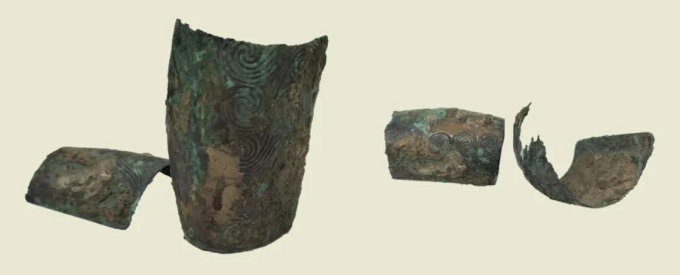
Another well-known example of historical arm protection is the Han Dynasty textile armguard famously embroidered with the phrase “五星出东方利中国 (Five Stars Rising in the East, Benefiting China )”. This particular piece, made from brocade, is one of the most iconic examples of fabric-based armguards. It was worn by slipping it onto the forearm and securing it with attached fabric ties. In some cases, leather and other materials were also used to make similar protective gear.
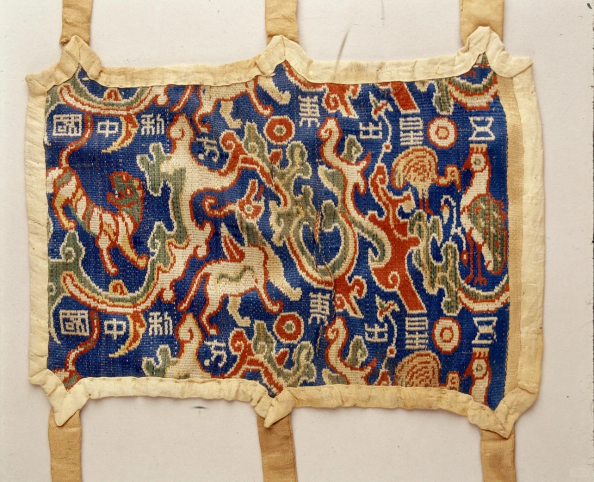
In comparison, what we often see in historical dramas today is a more simplified version—just a cloth strip tied around the sleeve. While this specific tying method isn’t fully verified by historical sources, it’s certainly a practical and easy way to manage long sleeves in day-to-day or action-heavy scenes.
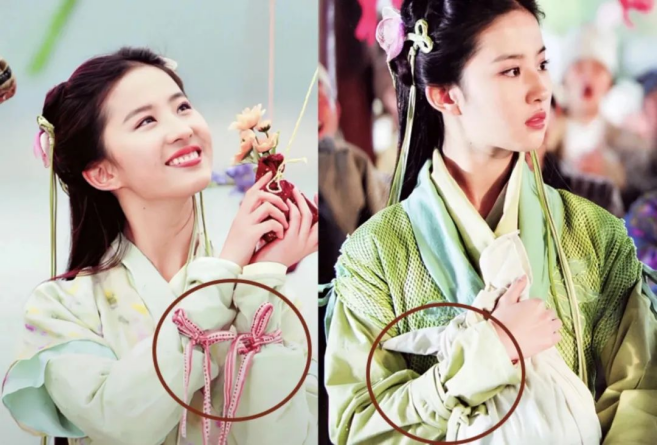
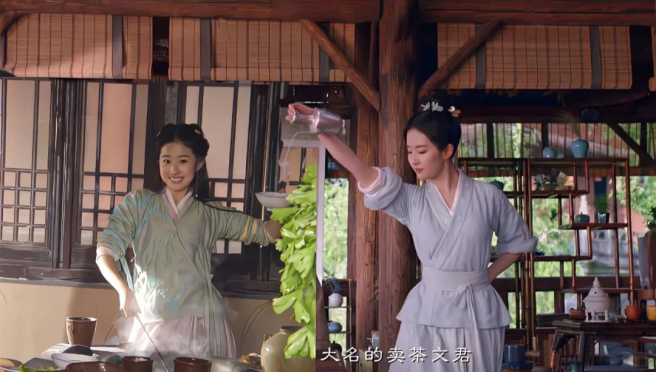
Ⅱ. Tying Sleeves with Panbo
Another classic method seen in historical dramas is the use of panbo—a time-tested accessory on screen. As scholar Shen Congwen notes in Studies on Ancient Chinese Clothing, during the Song Dynasty, laborers or performers would tie up their long sleeves with cords, looping them over the shoulders to keep their arms free. This method was known specifically as “panbo’er (襻膊儿)” and became widely used in daily life, especially for physical work or outdoor activity.
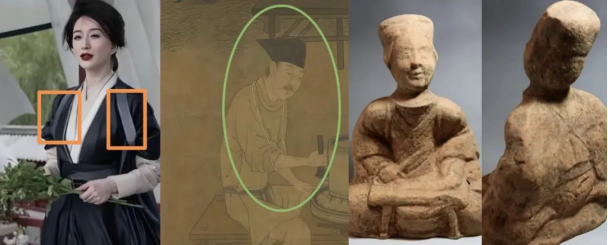
There were a couple of ways to use panbo: one was simply looping the tie around the arm like a band (left); the other involved crossing the cord behind the back and tying it in front to keep the sleeves secure (right).
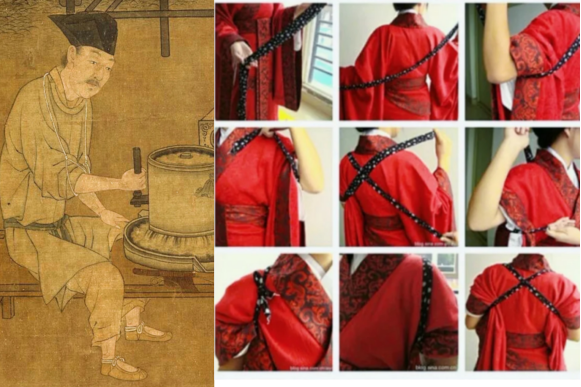
The popularity of panbo even gave rise to a small industry in the Song Dynasty. According to Zhou Mi’s Wulin Jiushi vendors who specialized in repairing everyday items—like pots, stoves, and buckets—also offered and mended panbo. This shows how common and essential these sleeve-tying accessories were at the time.

So why do we think ancient people might have simply used cords or fabric strips to tie their sleeves or secure wrist guards? Because historical records and artworks give us clues that this was quite common.
For instance, in the famous painting Emperor Taizong Receiving the Tibetan Envoy, we can clearly see tied cords positioned near the lower part of the skirt. These ties had two purposes: to prevent the skirt from coming undone, and to help lift the hem when needed—for example, to make movement easier or to avoid dragging the fabric on the ground. It’s a clever and functional bit of design, showing just how detailed and practical ancient clothing could be.
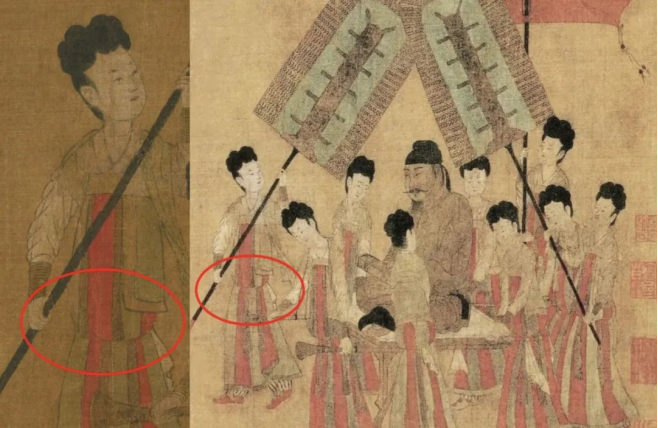
This same approach appears in historical dramas too, where characters sometimes tie ribbons just below the chest to help keep their skirts in place—a method not so different from the lower ties, and equally effective.
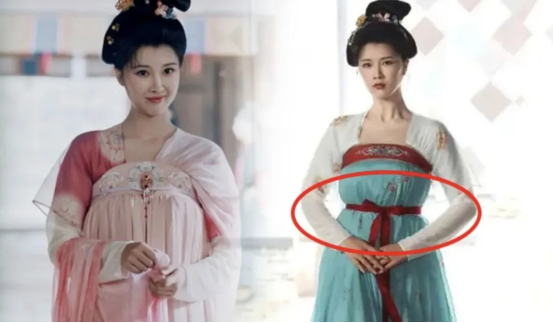
Even today, people use similar tricks in daily life—tying their sleeves with ribbons, cords, or even hair ties to keep them out of the way. Some use safety pins or brooches as quick fixes. These methods serve the same purpose as modern sleeve bands or arm covers.
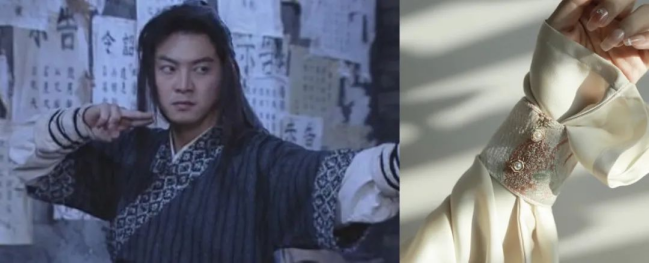
That said, these techniques generally work best with slightly narrower sleeves. If you try this with extremely wide sleeves (like the grand flowing ones in some Hanfu styles), the excess fabric can bunch up under the arms, which isn’t very comfortable over time.
Summary
So next time someone asks you, “How do people even live in Hanfu with those huge sleeves?” — here’s what you tell them:
First, not all Hanfu have wide sleeves — many styles feature slim, practical sleeves perfect for daily life.
Second, if you do find yourself in a flowy-sleeved emergency, just grab a string! Problem solved.
Here are 4 easy ways to secure your Hanfu sleeves in everyday situations:
1. Magnetic clasps – snap on and go.
2. Add elastic bands in the cuff – hidden but effective.
3. Cloth tie or traditional armguards – inspired by ancient solutions.
4. Modern sleeve cuffs or even a hair tie – quick, simple, and functional.
Got a favorite trick of your own? Drop it in the comments or share this with a friend who loves Chinese dress!
You’re welcome 😉
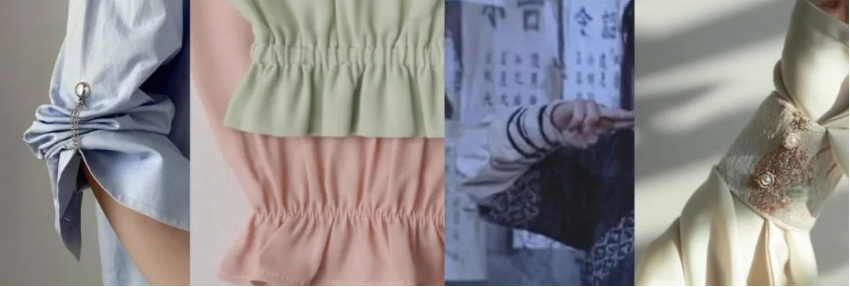
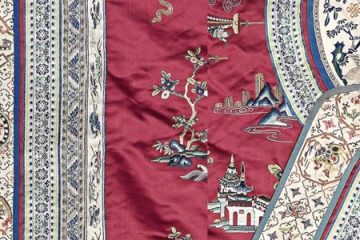
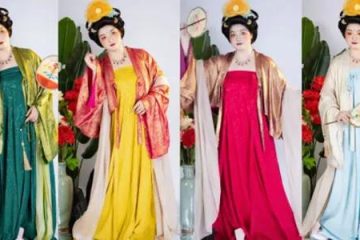
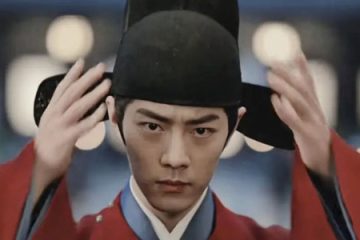
0 Comments